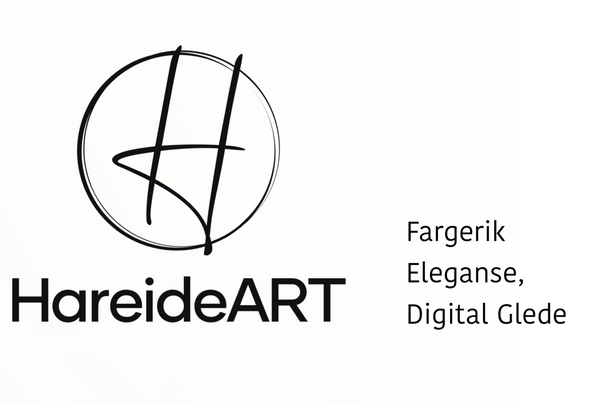What is original when working with digital art. The data file is the basis for printing images, while the printing plate is the basis for graphic printing sheets. The difference between the data file and the printing plate is that the printing plate can be physically stored in a suitable storage location, while the data file must be stored on a data storage medium, and a backup of the file is preferably taken to ensure that it is not lost forever.
This difference does not really affect what is original and what is reproduction. Reproduction is a reprint of an existing work of art. Original graphics are not a copy of anything, but an imprint of a plate, stone, canvas or computer file where the artist has created a work of art. The artist can choose to print just one copy or print an edition, where each copy in the edition is then considered an original. So far it may be simple, but what if an artist creates a larger painting, which is then digitized or photographed. You then have a digital file where you can make your own prints of the painting. If the artist signs the print and numbers it in the same way as graphic art prints. Is this print an original or a reproduction? There are actually divided opinions here.
An image from a computer file, which is printed in a certain number, and which is affixed with the artist's signature and printing method, is considered an original work of art, in the same way as a lithographic print. A digitization of an existing painting and work of art must be considered a reproduction if one stopped there. When the artist applies his signature and numbers images and reprint numbers, and also states that this is a print with the Giclee method, the print is sold as an original.
Most people probably think that a reproduction is a print that reproduces an original, for example a painting, a drawing or another graphic sheet. A reproduction therefore differs significantly from the original graphic, and should not be signed or numbered, but information about the original work should be added. Changing the size and colors or adding hand-colored elements does not change the fact that it is a reproduction, but here there are gray areas. If you change it so that it detaches itself from the original and gets its own artistic expression, it can end up within the concept of original graphics.
The printing method used for digital images is Giclee print or Giclee print.
The Giclée method requires special, advanced printers and a combination of lightfast ink and acid-free paper that is guaranteed by the manufacturer to have a minimum durability of 60-100 years. Such equipment is supplied by the printer manufacturers Canon, Epson and Hewlett-Packard, among others. Epson has a seven-colour system for inkjet printers, Canon has a twelve-colour system.
It is a fact that the technique is used by a number of artists for the production of photographic enlargements and the reproduction of graphic works in limited editions. The word is gradually becoming more diluted and replaced by more precise words such as digital printing and digital graphics, but is the only internationally known word to describe a method in which the prints of appearance for many artists replace lithography or screen printing.
New advanced printers and photomechanical printing techniques make it possible to create the illusion of an original work of art, even if it is a scan or photograph of an already existing work. It is claimed that certain players in the commercial art market apply signatures, editions and technical designations and the public can be tricked into buying reproductions in the belief that they are original graphics.
Giclée Fine Art Print is a universal term used by countless artists, museums and galleries around the world. Giclés are found in the collections of most major museums worldwide, including the Metropolitan Museum of Art and the Museum of Modern Art in New York, and have achieved sky-high prices at the major auction houses. A giclée by Gerhard Richter was sold in 2017 for over NOK 10 million at Sotheby's in London (Sotheby's lot 133). Annie Leibovitz, Chuck Close and Wolfgang Tillmans are other artists who have made giclées that have sold at auction for high sums.
What well-known galleries write about Giclee print.
On the website of Fineart.no you can read the following:
Reproduction vs Genuine Print - What's the difference?
Is a picture printed after the artist's death genuine? After the artist Ferdinand Finne died in 1999, his heir printed several pictures with a printed signature. The pictures sold well and it took time before questions were asked: Are the graphics real? What can be defined as original art? Finne customers got their money back.
At the general assembly of the International Association of Art in Vienna in 1960, a definition of graphic art was established. In order for a graphic work to be considered original graphics, it must:
- The graphic artist alone has the right to determine the final number of prints of each of his graphic works in the various techniques.
- The print must have the artist's signature, as well as information about the size of the edition and which number the print has in the edition.
- The original plate is destroyed or marked in such a way that it is clear that the edition printing has ended.
- The artist must have prepared the plate himself; carved the wooden block or the drawing on the stone, or digitally produced image.
- Works that do not meet the above conditions must be considered reproductions. For reproductions it is impossible to lay down any rules. They want reproductions to be marked so that they can be distinguished from original graphics. This particularly applies to the reproductions of such a high quality that the artist wishes to indicate this by signing a part of these mechanically produced prints.



